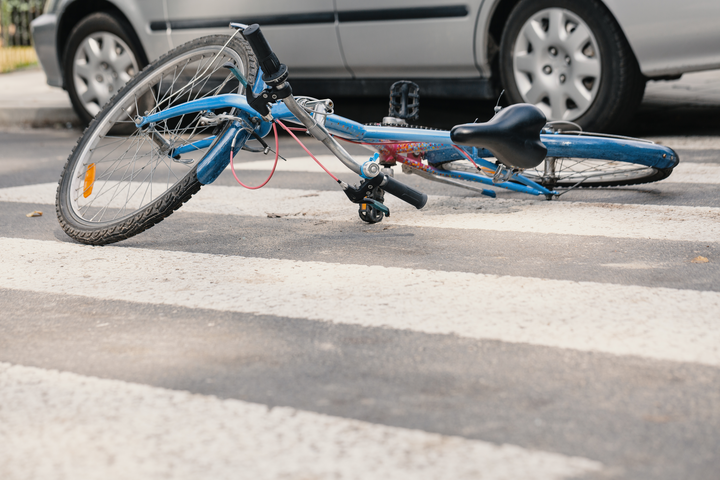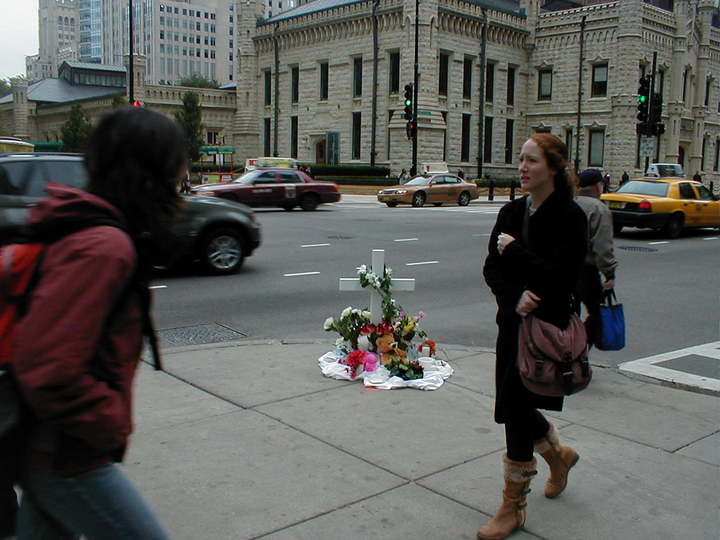*Editorial Note (October 4, 2024): After being introduced earlier this summer, the ordinance to lower the speed limit was delayed in advancing due to parliamentary procedures. However, thanks to your advocacy, it has now moved to the voting stage at the Committee on Pedestrian and Traffic Safety.
The committee must first approve the ordinance before it passes to the full city council for a final vote. We anticipate both votes will take place in the coming week.
Now, more than ever, it’s crucial to make your voice heard! Even if you sent an email to your alderperson earlier this year, we’re asking you to please do so again. Thank you for taking action to make Chicago’s streets safer for all.
Last year, 115 lives were tragically cut short in Chicago due to fatal car crashes.
Excessive speed was a critical factor 70 percent of those incidents.
With higher speeds, the likelihood of severe injuries or fatalities skyrockets.
Because of the role speed plays in car crashes, lowering the speed limit even a small amount can have an outsized effect on road safety. (Please read our recent op-ed in the Chicago Sun-Times on this topic.)
We are at a pivotal moment as local lawmakers consider reducing Chicago’s default urban speed limit — a proven strategy that has made streets safer in cities around the nation.
The Chicago City Council’s Committee on Pedestrian and Traffic Safety will soon convene to discuss this critical issue. Please let your alderperson know that you support reducing the citywide speed limit from 30 mph to 25 mph.
THE VIEW FROM THE EMERGENCY ROOM
Dr. Nicholas Cozzi, who serves as the EMS and Disaster Medicine Medical Director and Assistant Professor of Emergency Medicine at Rush University Medical Center, has seen far too many lives lost due to speeding drivers.
He said the physics behind speed are clear: The faster a vehicle travels, the slower the driver’s reaction time and the greater the impact upon collision.
Increased compression forces exerted on the body and organs at higher speeds lead to more severe injuries and a higher likelihood of fatalities. And the people outside of vehicles, of course, will suffer the worst consequences.
Seven to ten percent of ER visits stem from car crashes, said Cozzi, with speed often playing a major role. “Working a shift later today, I would not be surprised to see two or three patients who were victims [of car crashes].”
THE PERSONAL AND SOCIETAL COSTS OF SPEED-RELATED CRASHES
Cozzi said getting hit by someone traveling at faster speeds complicates and extends recovery for victims: “patients are in the hospital longer, they have a longer course of treatment, more intensive rehab, more likelihood for infections to occur, and ultimately, more likelihood of mortality.”
Beyond the immediate physical harm, Cozzi said we often forget about the broader societal costs of speed-related crashes.
Victims of car crashes are “often getting thousands and thousands of dollars of costly tests that were unnecessary if the accident never occurred,” he said. “They’re dealing with loss of work, loss of compensation in their own lives, potentially endangering their jobs, potentially endangering their ability to provide for their family.”
“It’s a ripple effect that not only affects our hospital systems but affects entire communities,” he said. “I’ve seen so many sad stories that affect not only one patient, but entire communities, entire families that are devastated.”
Understanding these extensive repercussions, Cozzi said, is essential for understanding the true scope of the problem and pursuing comprehensive solutions to create safer streets and communities.
RACIAL DISPARITIES IN TRAFFIC FATALITIES
Data shows that car crashes are experienced disproportionately by our most vulnerable and historically marginalized communities, including children, older adults, people living with disabilities, and people of color.
Black Chicagoans, for example, are more than twice as likely to be killed in a traffic crash than white Chicagoans, and almost half of all fatal crash victims are Black.
This disparity reflects the structural inequities present in majority Black and Brown neighborhoods, such as the prevalence of supersized streets and high-speed traffic.

REDUCING THE SPEED LIMIT AS A STARTING POINT
In the face of a staggering 40 percent increase in traffic fatalities in the state between 2012 and 2021, with pedestrians and cyclists accounting for a growing number of these tragic losses, Cozzi said lowering urban speed limits is a “natural first step” in fostering a safer environment for everyone getting around on our streets and sidewalks.
Ultimately, he said we need a societal commitment to systemic change, where the safety of all road users is prioritized, and drivers know that speeding and distracted attention can have grave consequences.
Infrastructure improvements — such as speed humps, curb extensions, and protected bike lanes — can work in tandem with lower speed limits to create a holistic approach to traffic safety. These design tweaks encourage drivers to travel at safe speeds on city streets, ultimately contributing to a safer and more sustainable transportation system.
STORIES OF SUCCESS IN OTHER CITIES
More US cities are demonstrating that lowering speed limits is an effective, low-cost measure that can be implemented swiftly to make our streets safer for all.
Boston, Seattle, Portland, and New York City all reduced urban-area speed limits, and the results have been tangible and lifesaving.
After New York City lowered its default citywide speed limit to 25 miles per hour from 30 mph, it saw a 23 percent decline in annual pedestrian deaths. In a written testimony shared with Chicago City Council, the New York City Department of Transportation said its pedestrian fatality rate is the lowest it’s been in 100 years.
Lowering the speed limit is particularly effective at addressing the most reckless kind of high-end speeding. The Insurance Institute for Highway Safety found that when Boston lowered the citywide speed limit from 30 mph to 25 mph, deadly speeding over 35 mph was reduced by almost 30 percent.
PLEASE TAKE ACTION
By reducing speed limits, we can save lives, improve road safety, and promote a more sustainable transportation system.
As we work towards a holistic approach to traffic safety, let’s make our voices heard and support this important initiative. Together, we can prevent further loss of life.
Chicago City Council’s Committee on Pedestrian and Traffic Safety will soon consider lowering the Chicago default speed limit.
Please tell your alderperson we are facing a traffic safety crisis in Chicago and that you support lowering the citywide speed limit from 30 mph to 25 mph.


